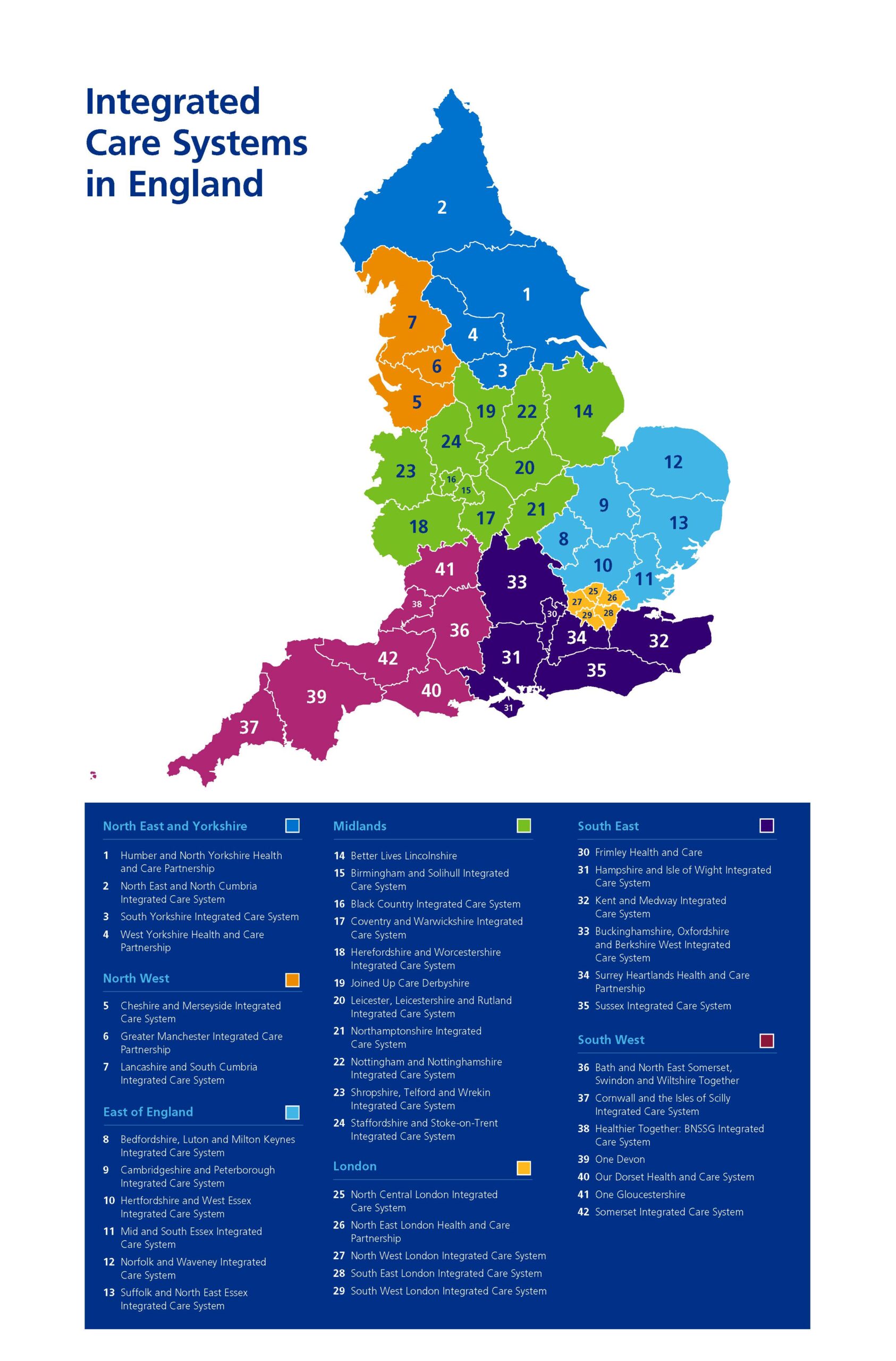How are NHS ICSs, ICBs and ICPs different?
That is a good (slightly dull) but technical question. We will explain and try to make the answer interesting.
ICSs have existed in one form or another since 2016 (they were previously called STPs and other names), but for most of this time have operated as informal partnerships using soft power and influence to achieve their objectives.
The Health and Care Act was passed in April 2022. The legislation made 42 integrated care systems (ICS) – which have existed in shadow form for a number of years – into legal entities, with statutory powers, on 1 July 2022.
Before we can the question how are NHS ICSs, ICBs and ICPs different, we need to explain an ICS.
First of all .. what is an ICS?
An ICS is a subregional level of NHS administration (and finance) in England.
Before the government decided to introduce ICSs, something called a Clinical Commissioning Group (CCG) did a similar role (though there are important differences). ICSs were formed by the merger of local CCGs, with local acute and mental health hospitals, ‘community trusts’ and general practices (it is hoped) – and most other aspects of the NHS in England.
ICSs usually cover 1-2 million people – i.e. roughly ‘county-sized’.
So. What’s the difference between an NHS ICS, ICB and ICP?
ICBs and ICPs are the two key components of an ICS:
- Integrated care boards (ICBs) = statutory bodies that are responsible for planning and funding most NHS services in the area. Effectively an ICB is the board of an ICS
- Integrated care partnerships (ICPs) = statutory committees that bring together a broad set of system partners – including local government (the council), the voluntary, community and social enterprise sector (VCSE), NHS organisations (e.g. local branch of Healthwatch) and others – to develop a health and care strategy for the area.
Summary
We have described how are NHS ICSs, ICBs and ICPs different. We hope it is clearer now (“hugely, thanks MyHSN Ed”). Whether the phrase ‘ICS’ exists in the future is unknown. They may just be called ICBs (i.e. thats where the power and the money lies) in the future.
Other resource
This is a good article from the Dorset ICS
This is how to find your local ICB


